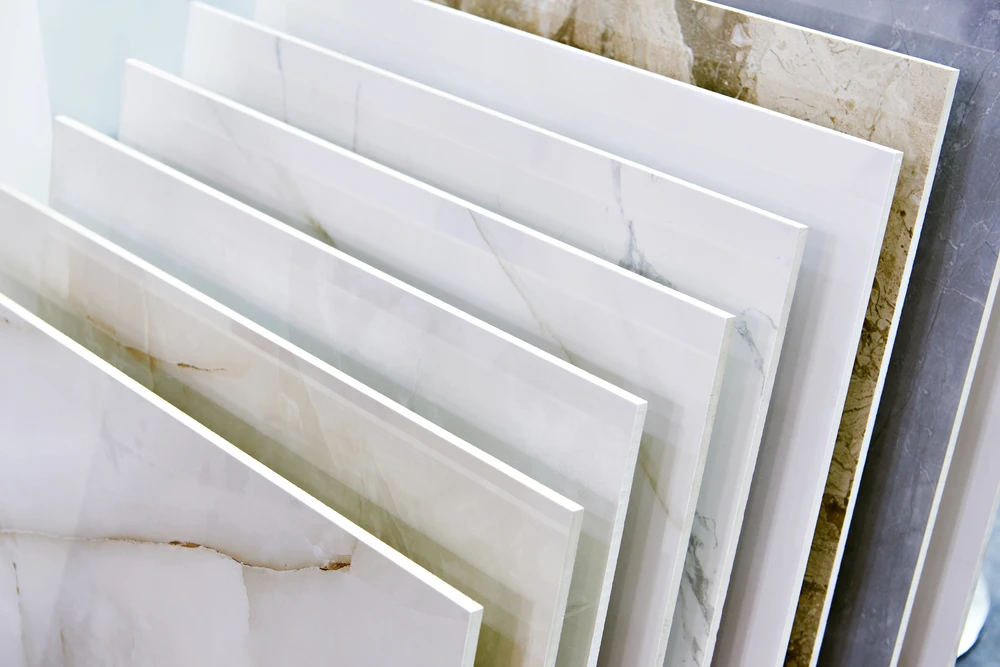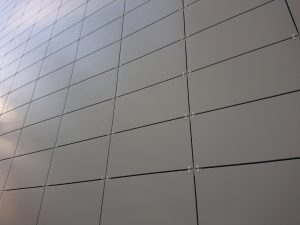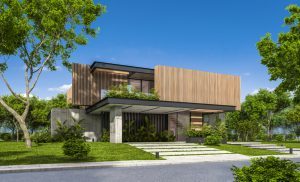In architecture and design, stone veneer cladding has long been a popular choice for adding a touch of elegance and sophistication to buildings. Its natural look and durability make it a sought-after material for residential and commercial projects.
However, as with any design trend, there comes a time when alternatives start to emerge, offering new possibilities and fresh perspectives.
This article will explore the alternatives to stone veneer cladding. Our endeavor will examine each option’s merits and limitations and showcase instances of their utilization in tangible architectural endeavors.
What is a stone veneer?
Stone veneer is a thin layer of natural or manufactured stone applied to buildings’ exterior or interior surfaces. It is designed to mimic the look and feel of traditional full-depth stone but with a fraction of the weight and cost. Stone veneer is typically made from limestone, sandstone, slate, or granite. It can be produced in various shapes and sizes to suit architectural styles and design preferences.
The installation involves attaching the thin stone panels to a substrate using mortar or adhesive. One of the critical advantages of stone veneer is its versatility. It can be used on new construction projects and renovations, adding a touch of elegance and sophistication to any building. Whether a residential home, commercial structure, or interior feature wall, stone veneer can transform ordinary spaces into extraordinary ones.
Stone veneer vs Cultured stone
It’s essential to differentiate between natural stone veneer and cultured (manufactured) stone. While both options offer similar aesthetic benefits, some key differences exist:
Natural stone veneer is made from quarried stones cut into thin slices. Each piece retains its unique characteristics, including color variations and natural imperfections. This creates an authentic look that manufactured alternatives cannot replicate.
Cultured (manufactured) stone is made from a mixture of cementitious materials that are molded and colored to resemble natural stones. While it may not have the same level of authenticity as natural stone veneer, cultured stone offers greater consistency in terms of color and shape. It is also generally more affordable and more accessible to install.
How thick is stone veneer?
The thickness of stone veneer can vary depending on the specific product and manufacturer. However, stone veneer is generally around ¼ inch to 1½ inches thick. This thin profile allows for easier installation than full-depth stone while providing the desired aesthetic appeal. It’s important to note that while stone veneer is lighter than traditional full-depth stone, it still offers the same durability and longevity. When properly installed and maintained, stone veneer can withstand time and weather conditions.
Stone veneer alternatives
Porcelain Cladding

1. Porcelain panels provide a cost-effective solution compared to traditional stone.
2. Low maintenance sets it apart from natural stone veneer, as it doesn’t absorb water or harbor mold or mildew, making it a hygienic choice for residential and commercial projects.
3. It’s look and texture are customizable, often available in various finishes such as wood-like, stone-like and metal-like porcelain cladding panels.
4. Exceptionally durable, porcelain resists scratches, stains, fading, moisture, and extreme temperatures, making it suitable for interior and exterior applications such as facades, feature walls, and even swimming pool surrounds.
5. Lightweight and easy to handle, porcelain cladding speeds up the installation process.
these advantages collectively highlight the appeal of seeking alternatives like porcelain cladding, offering opportunities for innovation and enhanced practicality in architectural endeavors.
Faux Stone Cladding
Faux Stone Cladding offers a cost-effective and visually appealing option for homeowners or builders seeking the elegance of stone veneer without the associated expenses or installation challenges. Its durability and versatility make it attractive for interior and exterior design projects. Here are a few of the main advantages of Faux Stone Cladding:
- It mimics the look of natural stone remarkably well. It comes in various textures and colors, offering various design possibilities.
- Compared to authentic stone veneer, faux stone cladding is more affordable. It provides a similar visual appeal without the high cost of natural stone.
- Faux stone cladding is typically lighter than natural stone, making it easier to install and reducing the need for additional structural support.
- It’s made from durable materials like polyurethane or fiberglass, resistant to weathering, fading, and damage from pests or moisture.
- It can be applied to various surfaces, including walls, fireplaces, and exteriors, allowing for creative and versatile applications.
Vinyl Siding

Vinyl siding provides an affordable and low-maintenance alternative to stone veneer. Its durability, variety of styles and ease of installation make it an attractive option for homeowners seeking an exterior cladding solution that balances aesthetics and practicality. Here are a few of the main advantages of vinyl siding:
- Vinyl siding is one of the most cost-effective exterior cladding options available, significantly cheaper than stone veneer.
- Low Maintenance: It requires minimal upkeep. Unlike natural stone, which may need sealing or occasional maintenance, vinyl siding typically only requires periodic cleaning.
- Variety: Available in numerous colors, styles, and textures, vinyl siding offers diverse options to match architectural designs and preferences.
- It’s resistant to moisture, rot, and insects, making it a long-lasting choice for exterior cladding.
- Vinyl siding is lightweight and relatively easy to install, reducing labor costs and installation time compared to stone veneer.
Conclusion
While traditional stone veneer cladding has long been popular in architecture and design, exciting alternatives offer new possibilities and fresh perspectives.
Porcelain (ceramic) cladding is a top contender with its exceptional durability, versatility, and low maintenance requirements, while Faux Stone Cladding and Vinyl Siding are also suitable alternatives.





